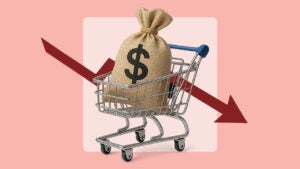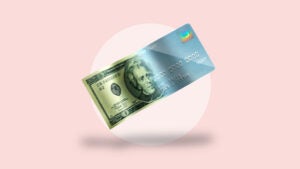Survey: Many consumers stick with same bank accounts for decades, cite convenience as a factor

These days, the perks of a shiny new bank account often include high yields and no fees, and many can be opened in mere minutes. Nevertheless, Americans with a checking account have held onto that account for an average of 19 years, while those with a savings account have had it for 17 years, according to Bankrate’s latest Checking Account Survey.
When asked why they’ve stayed with the same bank, 43 percent of checking account holders gave responses that valued the convenience of staying put, citing reasons such as it’s the same account they’ve always had and it’s too much of a hassle to switch.
Note that when it comes to the length of time a checking account is held, the survey average of 19 years reflects a blend of two subsets:
- 19 years for banks or credit unions that offer in-person locations
- 6 years for online-only financial institutions
Similarly, the average of 17 years that consumers have held savings accounts comprises:
- 18 years for banks or credit unions that offer in-person locations
- 6 years for online-only financial institutions
Ted Rossman, Bankrate senior industry analyst, says it’s important to reevaluate your bank accounts periodically. “Things change over time,” he says.
“You’re probably not wearing the same clothes or driving the same car that you had two decades ago. Your lifestyle changes and your bank accounts should, too. It’s important to shop around every year or two to make sure that you’re getting the best deal.”
— Ted RossmanBankrate senior industry analyst
Why consumers stick with their bank accounts
Nowadays, consumers can find bank accounts with attractive perks such as sign-up bonuses, ATM fee rebates or early direct deposit. With the survey’s finding of checking account holders keeping the same account for an average of 19 years, many consumers could be missing out on a better alternative that provides such benefits.
As for why they hang on to their current checking account, the most common reasons survey respondents cited were no/low monthly fees (18 percent), as well as it’s the account they’ve always had (18 percent).
When asked why they’ve stayed with the same bank, 43 percent of checking account holders gave responses that valued the convenience of staying put. They mentioned, for example, that:
- It’s the account I’ve always had: 18.3%
- They have convenient branch/ATM locations: 13.2%
- It would be too much of a hassle to switch: 9.5%
- I don’t have the time to research/shop around for other options: 1.9%
Other reasons respondents gave were:
- They have no/low monthly fees: 18.3%
- I am happy with the customer service: 16.3%
- Their reputation: 6.8%
- Their online or mobile tools: 5.7%
- They have good interest rates: 4.3%
- Other: 3.4%
- Don’t know: 2.3%
* Note: Percentages don’t total to 100 due to rounding.
Monthly fees
The survey found that more than 2 in 3 checking account holders (68 percent) do not pay any checking fees each month. This includes monthly service fees, overdraft fees and ATM fees.
This is in line with Bankrate’s most recent annual checking and ATM fees survey, which found that 47 percent of non-interest checking accounts don’t charge monthly service fees, while an additional 46 percent waive the fee when customers sign up for regular direct deposits.
Free checking accounts are ones that don’t charge a monthly service fee, regardless of your balance.
Tips for changing financial institutions
If you’d like to determine how your bank account stacks up against the competition, compare factors such as:
- Fees: Being charged monthly service fees or out-of-network ATM fees can really eat into your balance. It’s not difficult these days to find free checking accounts, as well as those that don’t charge customers for using ATMs outside their network. What’s more, many will reimburse ATM surcharges you incur from other banks for using their ATMs.
- Interest rates: When it comes to savings accounts, the top high-yield savings accounts are currently earning over 4.50 percent annual percentage yield (APY). Such high-yielding accounts are commonly offered from online-only banks, which may pass along the savings of not having to maintain branches. Conversely, big brick-and-mortar banks commonly offer rock-bottom APYs.
“Online banks often offer higher savings rates — the top yields are close to 5 percent right now, whereas the largest brick-and-mortar banks tend to offer something like 0.01 or 0.02 percent,” Bankrate’s Rossman says. “It can be a hassle to switch your primary checking account and reset all of your bill payments and direct deposits, so a good approach is to link the local checking account to an online high-yield savings account. That represents the best of both worlds.”
The 2025 Bankrate Awards can help consumers find the best options:
- Best online-only bank: Ally Bank
- Best credit union: Quorum Federal Credit Union
- Best bank for sign-up bonuses: Chase Bank
- Best mobile banking app: Bank of America
For those who are loyal to their bank or credit union but find other financial institutions provide some useful features, consider keeping your original bank — as long as you aren’t paying fees — and moving a portion of your money elsewhere to get features you want, such as a more intuitive mobile banking app.
Methodology
This survey has been conducted using an online interview administered to members of the YouGov Plc panel of individuals who have agreed to take part in surveys. All figures, unless otherwise stated, are from YouGov Plc. The total sample size was 2,712 U.S. adults, of whom 2,058 have a checking account and 1,806 have a savings account. Fieldwork was undertaken between January 27-29, 2025. The survey was carried out online and meets rigorous quality standards. It gathered a non-probability-based sample and employed demographic quotas and weights to better align the survey sample with the broader U.S. population.
Why we ask for feedback Your feedback helps us improve our content and services. It takes less than a minute to complete.
Your responses are anonymous and will only be used for improving our website.






